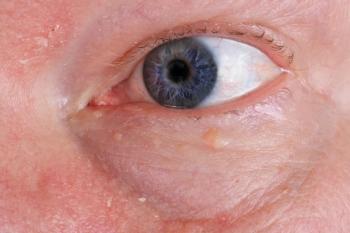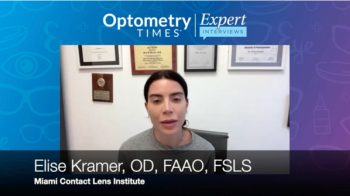
Cryosurgery: Available, efficient, and cost-effective for patients
Richard Castillo, OD, DO, shares his expertise in, "Cryosurgery for Optometric Surgeons: A safe, noninvasive, nonaerosolizing approach to periocular lesion removal in the COVID-19 era."
Optometry Times®' Kassi Jackson speaks with Richard Castillo, OD, DO, consulting ophthalmologist for Northeastern State University's School of Optometry, professor and assistant dean for surgical training and education, as he shares about his presentation, "Cryosurgery for Optometric Surgeons: A safe, noninvasive, nonaerosolizing approach to periocular lesion removal in the COVID-19 era," which he is presenting during this year's AOA annual meeting in Chicago.
"If anything has come out of the COVID pandemic, it's the realization that as optometrists, we have services to offer our community," Castillo said. "We have services which make an impact within the greater spectrum of health care, which can alleviate the burden that other health care providers have been under over the past two years. Cryo surgery is actually one of those things."
Key takeaways:
Richard Castillo, OD, DO:
"This is something that's available, that again, it's efficient, and it is cost effective for your patients.
It is something that everyone I would say that has graduated from optometry school within the past 50 years that, you know, can can handle instruments around the eye — and is comfortable working around the eye, can certainly learn this technique.
It offers the advantage to the patient that you don't really need anesthetic injections for the vast majority of these. And that's that's a big plus.
People don't like getting injections around the eye, and as soon as they hear, "Sell, if we do it this way, I don't have to give you a shot." They will look at me and go, "Wait a minute, no shot? That's what I want!" And then I'll say, "Well, but it you know, understand it'll take a little longer, you know, the healing takes a little bit longer."
In the end, the outcome is just as good...
I think it's a market builder. You know it, it will be attractive to the patient because it's not as scary as other ways of addressing these lesions.
I think it's good for the practice, it will draw in a certain demographic of patient that maybe wants some work done, or needs some work done, but yet, you know, is a little put off by the conventional ways we have removing lesions around the eye in the eyelid."
Newsletter
Want more insights like this? Subscribe to Optometry Times and get clinical pearls and practice tips delivered straight to your inbox.













































